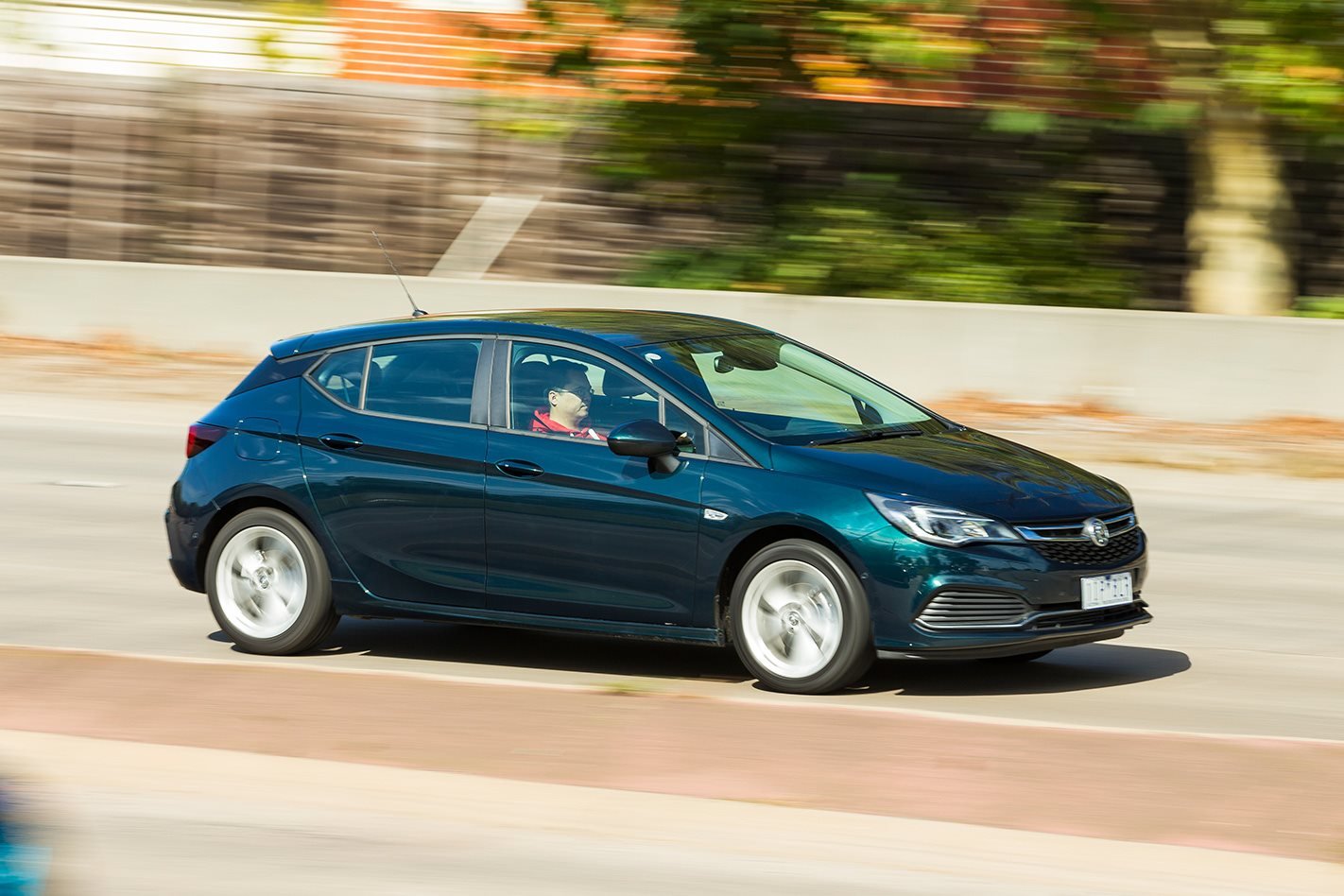
The Polish-built 2017 Holden Astra replaces the Cruze hatchback in Australian showrooms, with the switch from Korean to European sourcing also coinciding with a number of other fundamental changes for the brand’s volume-selling small hatch offering.
Styling is a big one, with design morphing from dull-but-purposeful to eye-catching and modern. Cabin quality has also seen a big improvement, with the Cruze’s seriously low-rent plastics being replaced by interior furnishings with a bit more tactile appeal.
| 2017 Holden Astra Sedan – 11 things you need to know
Tested here in mid-grade RS configuration, there’s also a powerful 1.6-litre turbo inline four under the bonnet – one of the Astra’s biggest selling points. With segment-leading power and a proper manual transmission, does Holden’s grocery-getter also have some sporty zing?

STRENGTHS
Powerful engine – with 147kW of peak power and 300Nm of torque, the Astra RS’s engine is not only significantly more muscular than the base Astra R’s 1.4-litre turbo, but it’s right up at the top of the class when it comes to output. All of that torque is available between 1700 and 4700rpm too, endowing the Astra RS with exceptional driveability, and it’s thoroughly enjoyable with the standard manual gearbox.
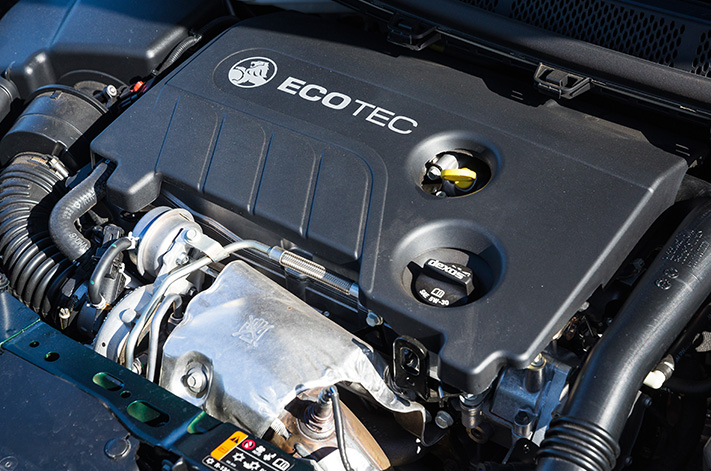
Compliant suspension – the ride is excellent thanks to supple and well-tuned suspension, which preferences passenger comfort rather than cornering capability. That said the Astra proves itself to be more than competent when shown a twisting stretch of road.
Clean design – Both inside and out, the 2017 Astra is a handsome car to look at. Compared to the fairly unexciting Cruze hatch that it replaces, the Astra’s European design has just enough visual flair to keep your eyes interested.
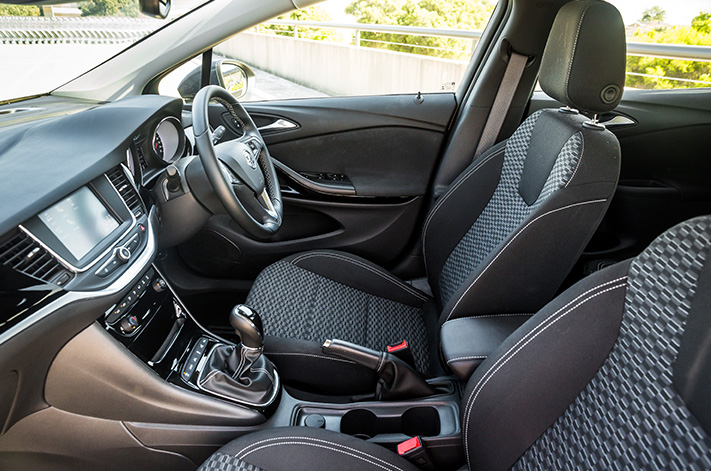
Well-weighted steering – Maybe not an attribute that will be immediately appreciated, but the Astra’s steering won’t have you straining to spin the wheel at low speeds, nor is it disconcertingly light. It’s right in the Goldilocks zone, and that’s part of what makes this car easy to drive.
Useful-sized boot – with 360 litres of cargo capacity the Astra’s boot area isn’t quite in the same league as many of its competitors in terms of on-paper specifications. However, it’s still more than big enough for the average pram or a couple of sets of golf clubs, and there are shopping bag hooks to help keep small loads of shopping secure.
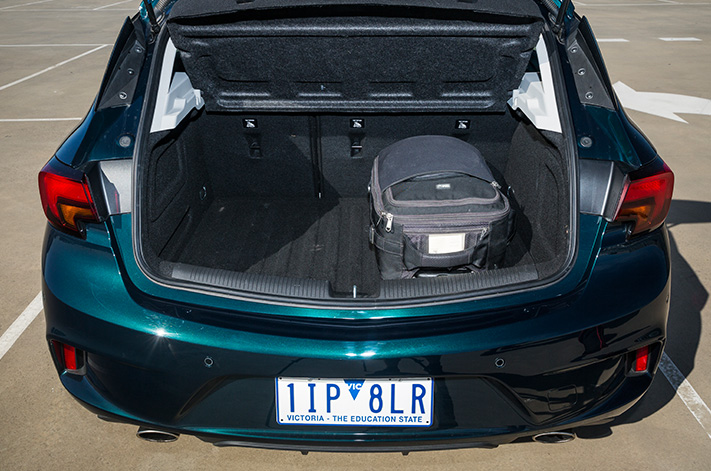
Good rear seat space – back seat passengers are treated to a spacious bench seat with good knee and foot room. A pair of adults will find plenty of sprawling space, though like most small cars it’ll get a bit squeezy with three sitting across the bench.
Digital radio – standard-issue across the full Astra range, a digital radio tuner allows a broader array of stations to be listened to. Other standard inclusions on the Astra RS include rain-sensing wipers, dusk-sensing headlamps, keyless entry/ignition, front and rear parking sensors, blind spot monitoring and a reversing camera.
WEAKNESSES
Torque steer – one side effect of a torque-laden engine driving the front wheels is torque steer, the sensation of the steering wheel being tugged left or right when under hard acceleration. It reminds you that though this car may have a lot of power for its price point, it’s intended more for effortless cruising than it is for driving in a properly sporty manner.
Axle tramp – another by-product of strong power and a relatively soft suspension is axle tramp, the tendency of the driven wheels to ‘hop’ up and down when traction is broken. You won’t experience much of it in dry weather, but when rains starts to fall the Astra can spin up its front wheels easily.
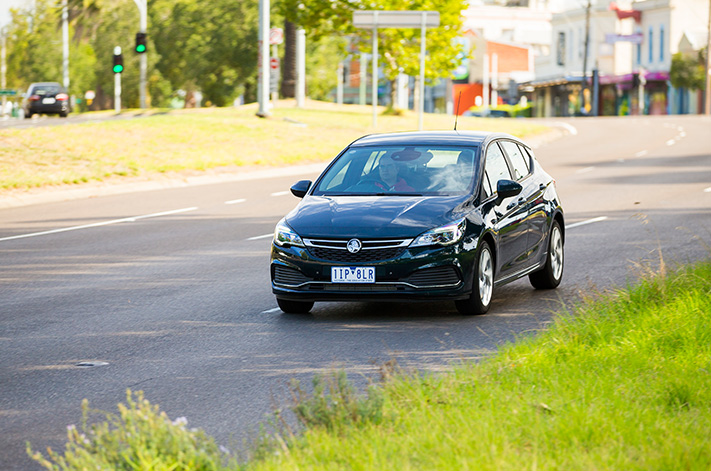
Ergonomics – generally speaking the Astra’s cabin is a nice place to be, but there are some ergonomic issues. Things like the mobile phone pocket in the centre stack being far away from the USB port in the armrest box, necessitating a cord to stretch right across the shifter area if you want to use smartphone mirroring – or just charge up your phone. The gearshift knob is also an awkward shape, and doesn’t feel nice in the palm of your hand.
No rear air vents – your rear passengers may have to sweat for a few minutes until enough cool air wafts out of the front air vents to reach the rear of the cabin, something that could have been avoided had the Astra been equipped with rear face-level air vents as standard.
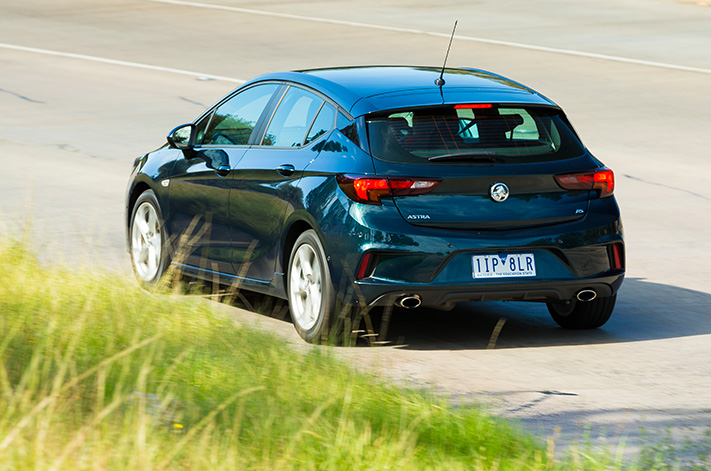
Needs 95 octane fuel – unlike the base model Astra R and Astra R+, the larger, higher-output engine of the Astra RS and RS-V requires more expensive premium unleaded fuel. That means you’ll be paying more at the pump per fill.
No integrated sat-nav – priced at $26,490, the Astra RS manual exists at a price point where satellite navigation is fast becoming standard-fit. Unfortunately, Holden has elected to keep a built-in sat-nav system out of the mid-grade Astra, leaving smartphone mirroring via Apple CarPlay and Android Auto your only option for putting navigation info up on that seven-inch colour touchscreen.
WHAT RIVALS SHOULD I CONSIDER
There are plenty of alternatives, but few can match the Astra RS for outright power and torque. That said, the following are polished offerings within the segment: Volkswagen Golf, Peugeot 308, Ford Focus, Subaru Impreza. The new Hyundai i30 and Honda Civic hatchback are also set to go on sale locally too.



